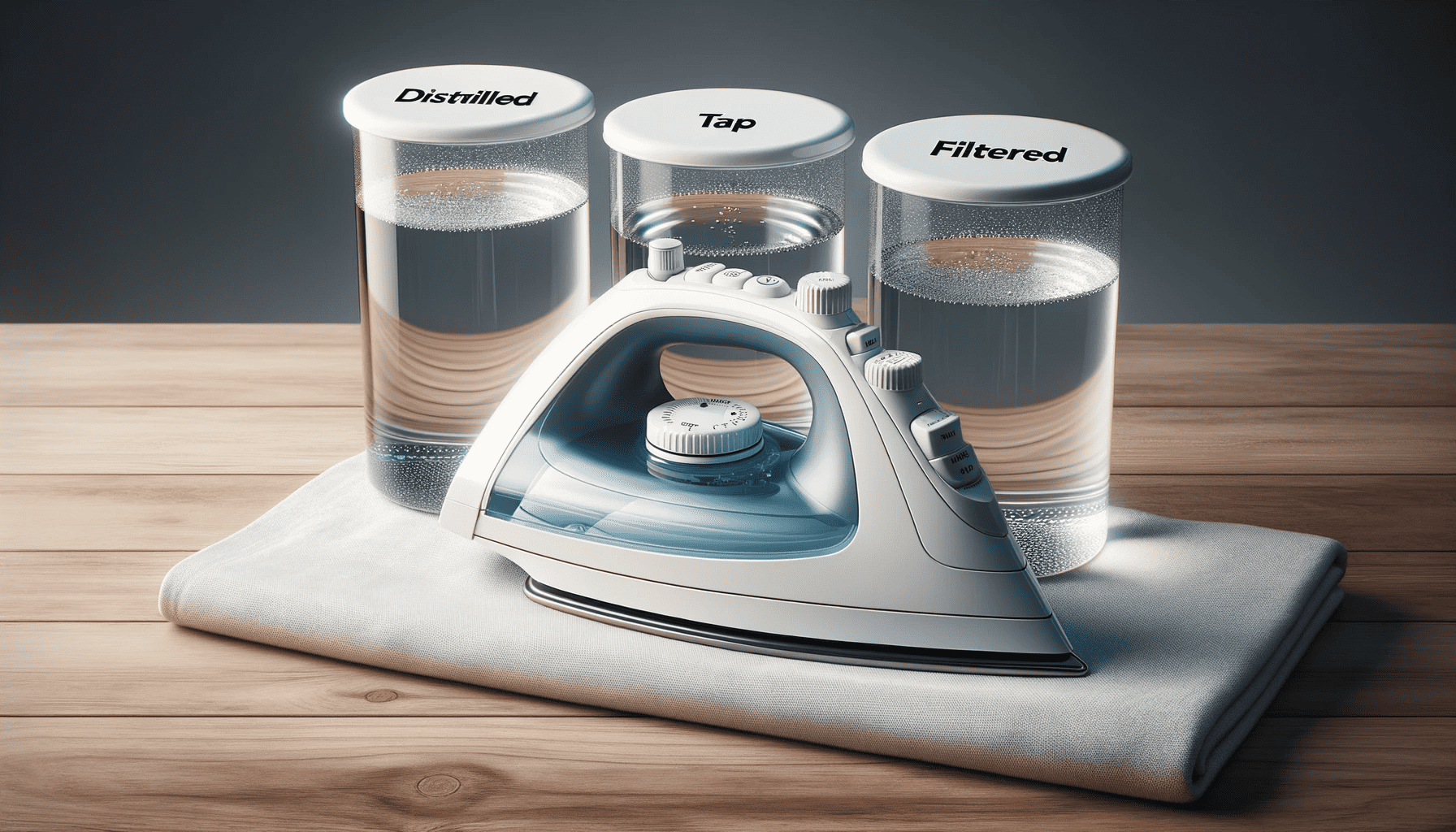When it comes to taking care of our clothes, most of us put a great deal of effort into ensuring they look their best. One of the tools often employed in this endeavor is the trusty steam iron. But, have you ever stopped to consider the type of water you’re filling your iron with?
Let’s dive into the t ee main types of water sources commonly used in steam irons: distilled, tap, and filtered water.
1. Distilled Water
Pros:
- Purest Form: Distilled water is boiled and then cooled to collect the condensation, leaving most impurities behind.
- Minimizes Scale Build-Up: With no minerals, there’s a reduced risk of limescale forming inside your iron.
- Extended Iron Lifespan: By avoiding mineral build-up, you’re likely giving your steam iron a longer, happier life.
Cons:
- Cost: Continually buying distilled water can add up over time.
- Environmental Impact: Think about the plastic bottles if you’re buying it from stores.

2. Tap Water
Pros:
- Convenient: No need to buy anything extra. Just turn on your tap and fill up.
- Cost-Effective: It’s included in your water bill, so no extra expense for ironing.
Cons:
- Mineral Deposits: Tap water can be hard (especially in certain regions) leading to mineral build-up in your iron.
- Reduced Iron Efficiency: Over time, mineral deposits might cause the iron to produce less steam.
3. Filtered Water
Pros:
- Balanced Choice: Offers a middle-ground between distilled and tap water.
- Reduced Impurities: Filters out major contaminants and reduces mineral content.
- Better for Iron’s Health: Less likely to cause mineral build-up compared to regular tap water.
Cons:
- Requires a Filter: You’ll need a filtration system or jug.
- Not as Pure as Distilled: Still contains some minerals, though far less than tap water.
So, which water is the best for your steam iron? If you're aiming for longevity and optimal performance of your iron, distilled water stands out. However, filtered water provides a balance between purity and convenience. Tap water, while handy, might cost you in the long run with potential iron repairs. Whatever you choose, just remember that a little attention to this detail can make a big difference in the care of your clothes and the life of your steam iron.< class="wp-block-separator has-alpha-channel-opacity"/>
Diving into Distilled Water: The Iron’s Good Friend?
Okay, folks, let’s chat. You know how you’ve got that one buddy who’s always there for you? Well, for steam irons, that buddy is distilled water. Let’s explore why distilled water is such a popular choice for steam irons and, just for fun, let’s learn how to whip up some homemade distilled water too.

Why is Distilled Water a Popular Choice for Steam Irons?
1. It’s Crystal Clear
Distilled water is the MVP when it comes to purity. It’s free from minerals and impurities, making it the cleanest water option for your iron.
2. No Mineral Deposits
You know those annoying white flakes that sometimes come out of your iron? Yeah, those won’t happen with distilled water. It prevents mineral build-up which can clog the steam vents.
3. Longer Iron Lifespan
With no minerals to damage the internal components, using distilled water can significantly extend the life of your steam iron. It’s like giving your iron a longevity potion!
4. Consistent Steam Output
Minerals in water can interfere with steam production. But with distilled water? It’s always smooth sailing (or should I say, steaming?).
The Process of Making Your Own Distilled Water at Home
Ready to be a DIY superstar? Let’s get into it!
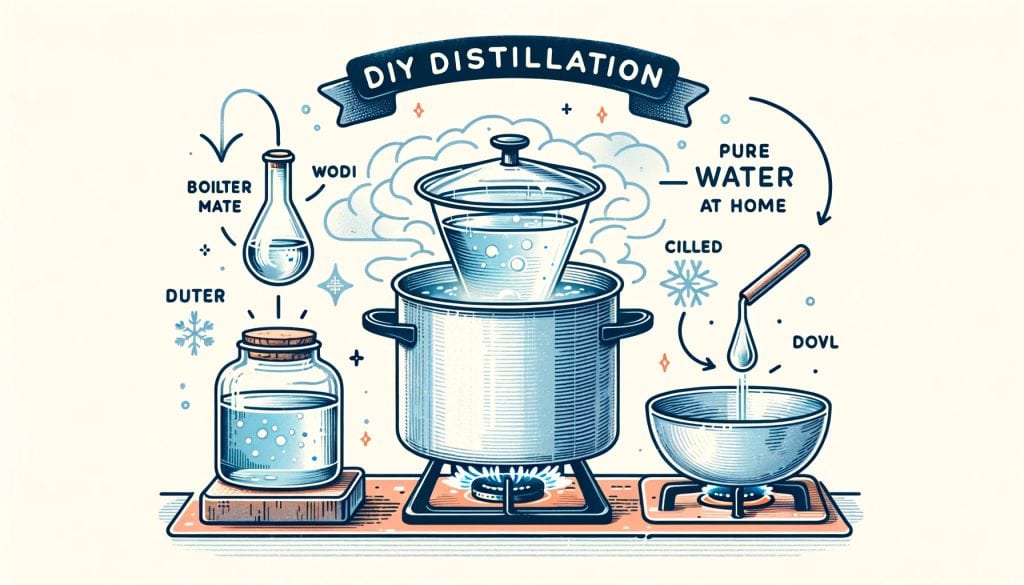
1. Start with a Large Pot
Fill a large pot about halfway with tap water.
2. Upside-Down Lid
Place the pot’s lid upside-down, so the handle is facing downwards. This will help direct the steam to the center.
3. Heat it Up!
Bring the water to a boil.
4. Ice, Ice, Baby
While the water’s boiling, place ice cubes on the upside-down lid. This causes the steam to condense and form water droplets.
5. Collect Good Stuff
As the steam rises, hits the cold lid, and condenses, it’ll start dripping down from the handle into a bowl or container you’ve placed in the center of the pot. This dripping water? That’s your homemade distilled water!
6. Cool and Store
Let the distilled water cool down before storing it in a clean container.
There you have it! Not only did you learn why distilled water and steam irons are a match made in heaven, but you also unlocked a cool DIY trick. So, the next time you're ironing and run out of distilled water, remember – you've got the power to make your own!< class="wp-block-separator has-alpha-channel-opacity"/>
The Tap Water Dilemma: Can It Be Used in Steam Irons?
Alright, so here’s the deal. We’ve all been there: you’re about to iron that favorite shirt of yours, and you think, “Do I really need to go buy distilled water? Can’t I just use tap water?” It’s a common question, and today, we’re diving deep into it. Grab your snorkels!
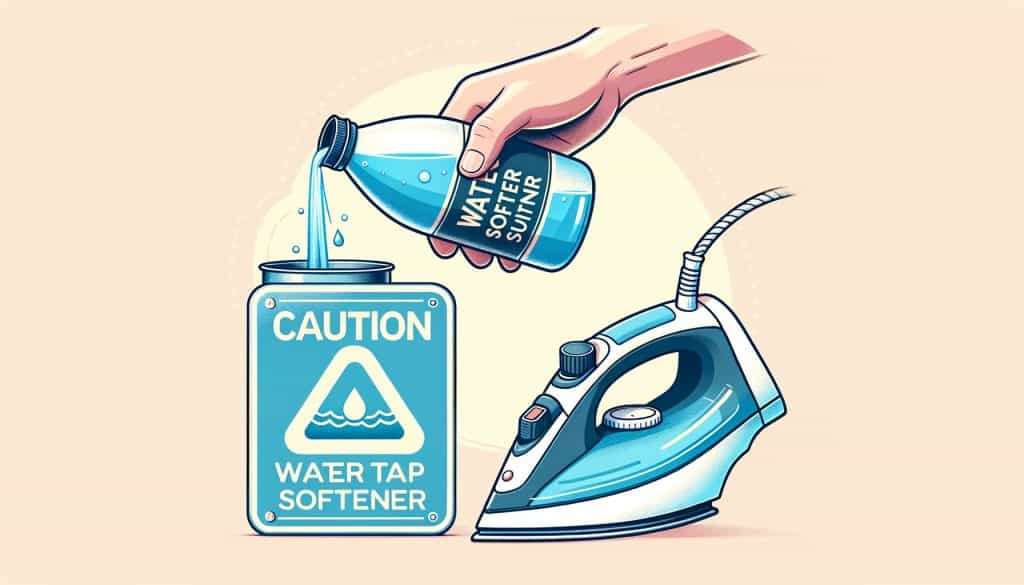
Also see: Good Steam Iron That Doesn’t Leak
Understanding the Effects of Tap Water on Steam Iron Performance
1. Mineral Build-up
Tap water often contains minerals like calcium and magnesium. Over time, these can accumulate inside your iron, leading to those pesky white flakes that stain your clothes.
2. Reduced Steam Efficiency
Remember those minerals I just mentioned? They can also clog the steam vents, resulting in uneven steam distribution. And let’s be real, nobody’s got time for patchy ironing.
3. Shortened Iron Lifespan
Consistent use of tap water can lead to internal damage, causing your trusty iron to bid you farewell sooner than expected. It’s like feeding it junk food; sure it’ll work for a while, but eventually, it’s going to slow down.
4. Potential for Rusting
Some tap waters can lead to rust formation inside the iron. And rusty water stains? They’re the exact opposite of the fresh, crisp look we’re going for.
Ways to Mitigate the Adverse Effects of Using Tap Water in an Iron
Hold on, don’t chuck out that tap water just yet! There are ways to minimize its effects:

1. Mix It Up
A 50/50 blend of tap water and distilled water can be a handy compromise. You get to use tap water, but the distilled water dilutes the mineral content.
2. Regular Cleaning
Make it a habit to clean your iron’s steam vents and reservoir regularly. This helps get rid of mineral deposits that may have formed.
3. Use a Water Softener
If you’re in an area with particularly hard water, consider using a water softener. It reduces the mineral content, making it gentler on your iron.
4. Empty After Each Use
Don’t let water sit in the iron after you’re done. Empty it to prevent prolonged exposure to minerals.
So there you have it! While tap water might not be the perfect match for your iron, with a little care and attention, you can still make the relationship work. The next time you’re about to fill up your iron, take a moment to think about what’s best for your clothes and your trusty ironing buddy. Happy ironing!
And hey, before you go, don't forget to check out those images above! They're a visual treat and super informative. Cheers!< class="wp-block-separator has-alpha-channel-opacity"/>
Filtered, Bottled, and Rainwater: Unconventional Choices Explored
Let’s be real, when it comes to ironing, most of us just grab whatever water’s handy. But have you ever thought about reaching for that bottle of Evian or that jug of filtered water from the fridge? Or heck, even catching some rainwater? Let’s dive into these unconventional choices and see if they’re worth the hype.
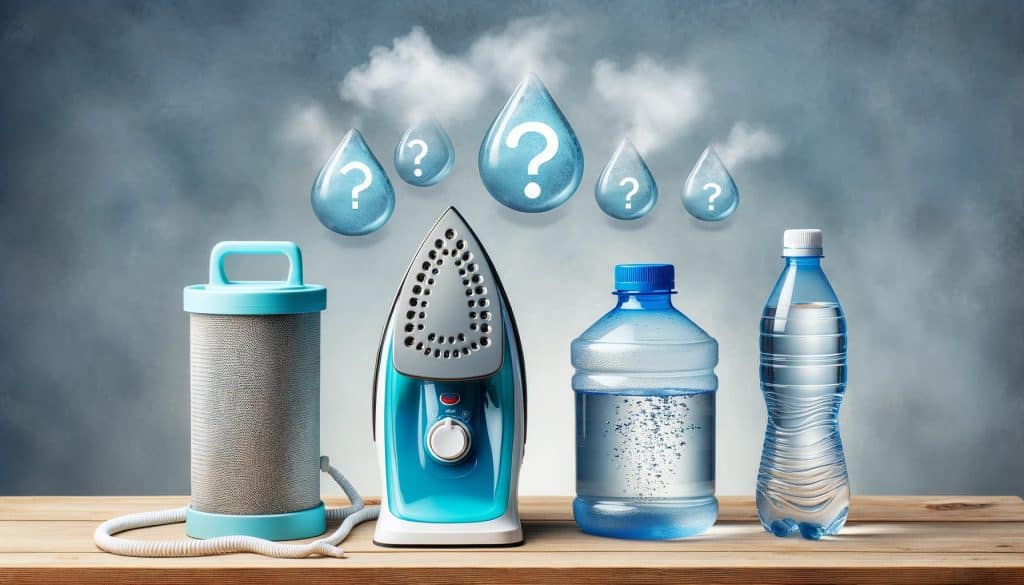
Investigating the Suitability of Filtered and Bottled Water in Steam Irons
1. Filtered Water
Pros:
- Reduced Minerals: Filtering water removes a good chunk of those minerals that can cause build-up in your iron.
- Easy Access: Got a filter jug in your fridge? No need to run to the store.
Cons:
- Not Completely Pure: While it’s better than tap, it’s not 100% free from minerals. Over time, some build-up is still possible.
2. Bottled Water
Pros:
- Consistency: Bottled water has a consistent mineral content, so you know what you’re getting each time.
- Convenience: Grab and go from any store. No fuss!
Cons:
- Cost: Over time, those bottles can add up! Your wallet might feel the pinch.
- Environmental Concerns: Plastic bottles aren’t the best for our planet, right?
Debunking Myths: Is Rainwater the Same as Distilled Water?

Also see: Ironing Chinos: The Great Debate – To Iron or Not to Iron
Rainwater
- Natural Process: Just like distilled water, rainwater is the result of evaporation and condensation. Nature’s own distillation process, if you will.
- Low in Minerals: Generally, rainwater has minimal mineral content, making it kinder to your iron than tap water.
But…
- Pollutants: Depending on where you live, rainwater can pick up pollutants as it falls. Think about car emissions, industrial pollutants, and even bird… well, you get the idea.
- Storage Issues: If you’re collecting rainwater, how you store it matters. Stagnant water can become a breeding ground for bacteria. Yikes!
In short, while rainwater is closer to distilled water than tap, it’s not quite the same thing. If you’re thinking of using it, make sure it’s collected and stored properly to avoid any nasty surprises.
Alright, there you have it! The lowdown on some unconventional water choices for your iron. Whether you're a filtered water fan, a bottled water buff, or a rainwater rebel, now you've got the facts. And remember, whatever you choose, treat that iron right, and it'll return the favor with crease-free clothes every time. Happy ironing, folks! And don't miss out on the images above. They're packed with more insights!< class="wp-block-separator has-alpha-channel-opacity"/>
Steam Iron Water Tanks: The How-To Guide
Ever stared at your steam iron, water jug in hand, and thought, “Am I doing this right?” Hey, we’ve all been there. Filling that water tank might seem like a no-brainer, but there’s a method to the madness. So, let’s get down to it and make sure you’re filling that tank like a pro.
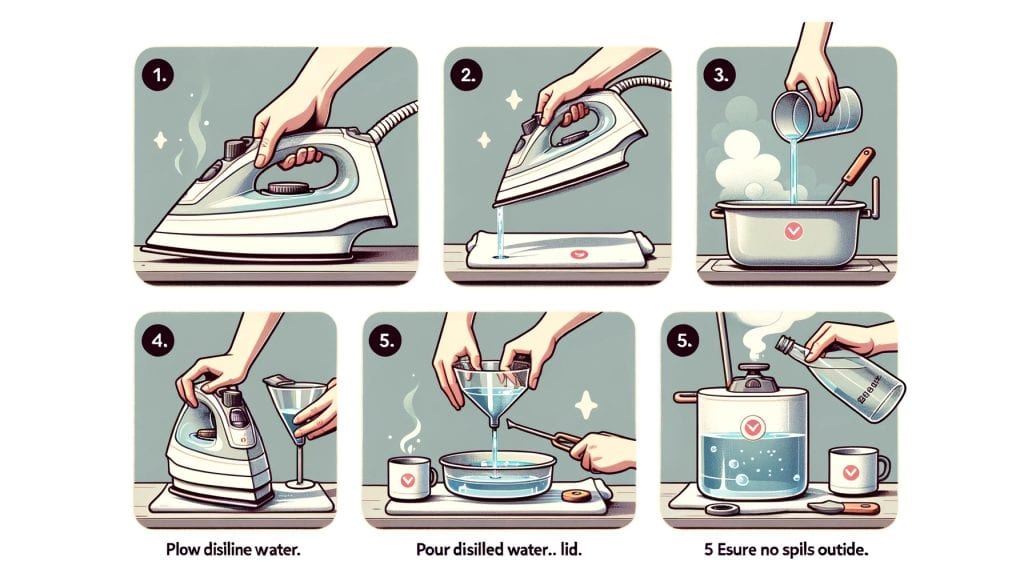
Guiding You T ough the Correct Way of Filling Water in Your Steam Iron Tank
Step-by-Step: The Perfect Fill
- Unplug It: Safety first, folks! Ensure your iron is unplugged and cool to the touch.
- Open the Lid: Locate the water tank lid. It usually flips open or slides out.
- Pour with Care: Using a jug or cup, pour the water steadily into the tank. Remember, slow and steady wins the race. No need to rush and make a splashy mess.
- Fill ‘er Up: Most irons have a ‘max fill’ line. Don’t go past it! Overfilling can lead to leaks and drips.
- Seal the Deal: Close the lid securely. Give it a little jiggle to make sure it’s locked in place.
Tips on Maintenance and When to Empty the Water Tank
Keep It Clean: Every now and then, give that tank a rinse. It’ll help get rid of any mineral deposits or gunk that might be lurking in the corners.
Empty Regularly: If you’re not using your iron daily, it’s a good idea to empty the water tank after each use. Stagnant water isn’t just yucky; it can also lead to mold or bacteria growth.
No Storage Surprises: Storing your iron? Empty the tank! You don’t want any surprise leaks damaging your storage shelf or closet.
Check for Cracks: Every once in a while, give your tank a once-over. If you spot any cracks or damage, it might be time for a new iron. Better safe than sorry.
There you have it, friends! Mastering the art of the steam iron water tank isn't rocket science, but a few handy tips and tricks can make all the difference. And hey, while you're here, check out those images above. They've got some visual guides that'll make your ironing journey even smoother. Iron on!< class="wp-block-separator has-alpha-channel-opacity"/>
Navigating T ough Various Steam Iron Brands and Models
Ah, the world of steam irons. It’s vast, it’s varied, and let’s be real: it can be downright overwhelming. Ever walked down the iron aisle and felt like you’d landed on another planet? There are so many brands, models, and shiny buttons to choose from! But fear not, dear reader. We’re about to embark on a whistle-stop tour of the steam iron universe.
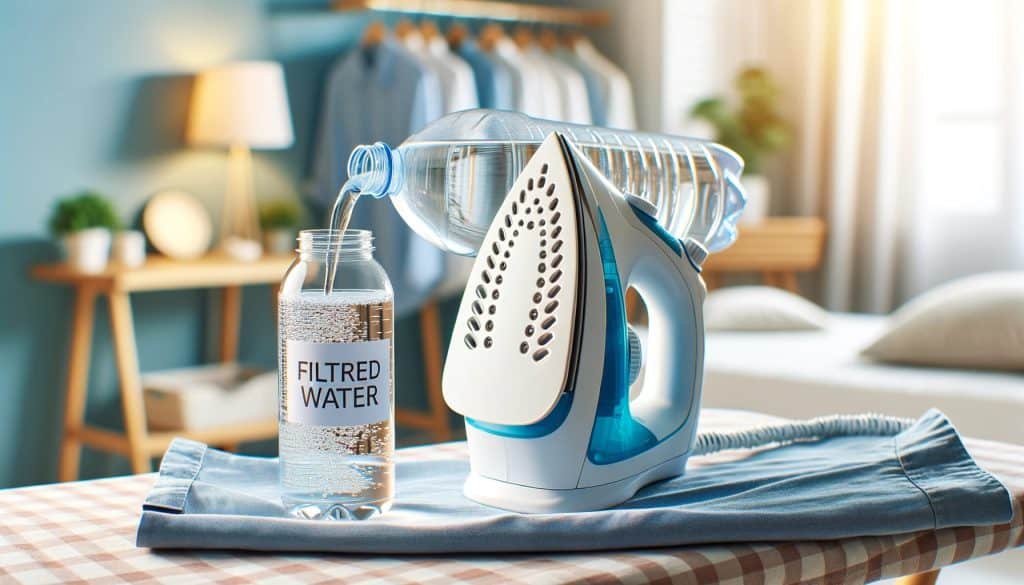
Also see: Introducing Braun’s Carestyle 7 Pro: The Ultimate Ironing Solution
Reviews and Comparisons: Finding Good Iron for Hard Water Areas
The Hard Water Challenge: Hard water can be an iron’s arch-nemesis. Those pesky mineral deposits can clog up your iron, reducing its performance and lifespan. So, if you’re living in a hard water area, you need an iron that’s up for the challenge.
Top Picks for Hard Water Areas:
- IronMaster 3000: Known for its built-in anti-scale system, this bad boy can handle the hardest of waters with ease.
- SteamGenie Pro: With a detachable water tank and a special filter, it keeps those minerals in check and out of your iron.
- AquaFlow Elite: This one boasts a self-cleaning feature that’s perfect for hard water warriors.
Uncovering the Top Portable Steam Irons and Steam Generators
On-the-Go Ironing: Whether you’re a jet-setter or just like to keep your clothes crisp on trips, a portable steam iron is a must-have.
Top Portable Picks:
- TravelMate X: Compact, lightweight, and with a dual voltage setting. It’s the globe-trotter’s dream.
- QuickFix Mini: Fits snugly in any suitcase and heats up in a jiffy. Perfect for those last-minute touch-ups.
Steam Generators – The Big Guns: These aren’t just irons; they’re powerhouses. If you’ve got a mountain of laundry or some seriously stubborn creases, a steam generator is your best bet.
Top Steam Generators:
- SteamBlast Pro: This one’s got a separate water tank and pumps out steam like nobody’s business.
- UltraIron Max: With a continuous steam function and a super-sized water tank, it’ll tackle even the largest laundry piles.
Alright, folks! That’s your crash course on the world of steam irons. And hey, if you’re a visual learner, don’t miss those images above. They’ve got the lowdown on all the top picks, so you can find the perfect iron for your needs.
< class="wp-block-separator has-alpha-channel-opacity"/>Frequently Asked Questions
Navigating the world of steam irons and water types can be a tad tricky, so it’s no surprise you’ve got questions. And guess what? We’ve got answers! Let’s dive into some of the most common queries folks have about steam irons and the H2O they run on.
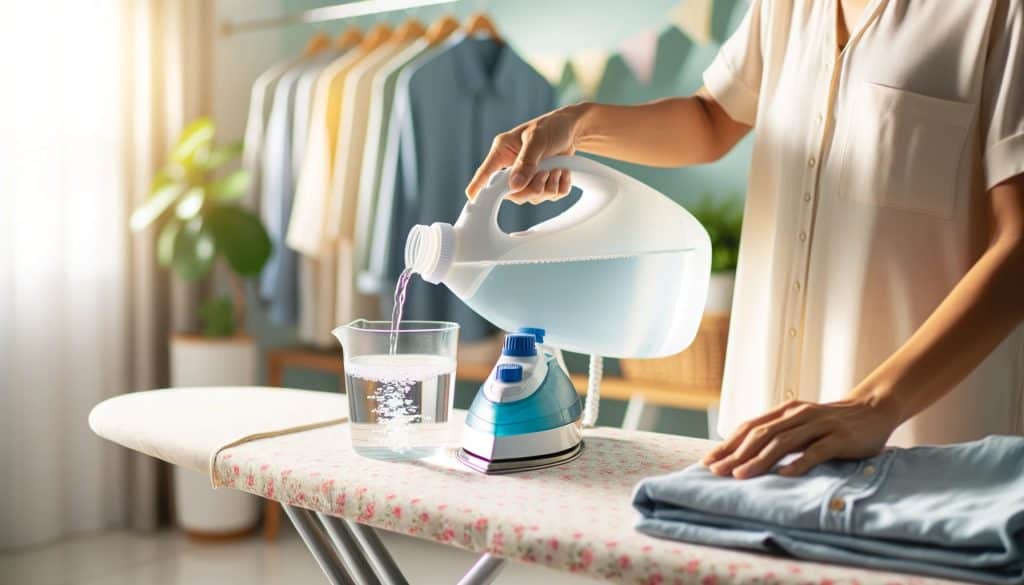
Can I use filtered water instead of distilled water in my iron?
Answer: You sure can! Filtered water does remove many impurities, but it might not get rid of all the minerals that distilled water lacks. Using filtered water is definitely a step up from straight tap water, but if you want to be super safe and prolong your iron’s life, distilled water is still the top dog.
Is it okay to leave water in the iron tank?
Answer: It’s best not to. Leaving water in the tank can lead to mold or mineral buildup, especially if you’re using tap water. Empty your iron after each use and let it air out. Trust me, your iron (and your clothes) will thank you!
How does the type of water used affect the iron’s performance?
Answer: Oh, it makes a world of difference! Using hard water or water with lots of minerals can cause buildup in your iron, making it less effective and even leading to those dreaded brown water spots on your clothes. Distilled water, being mineral-free, helps your iron steam smoothly and keeps it in tip-top shape.
Where can I buy suitable water for ironing?
Answer: Most grocery or convenience stores will carry distilled water in the bottled water section. If you’re looking for a more sustainable option, consider investing in a home distillation system. Not only will your iron be happy, but Mother Earth will give you a nod of approval too!
Why is distilled water preferred for steam irons?
Answer: Distilled water is the MVP because it’s free of minerals and impurities. This means no mineral buildup in your iron and no pesky water spots on your favorite shirt. It helps your iron perform at its best, extending its lifespan and ensuring your clothes always look crisp and fresh.
< class="wp-block-separator has-alpha-channel-opacity"/>Helpful Tips and Tricks for Ultimate Ironing Performance
Ironing might seem straightforward, but a few insider secrets can elevate your ironing game to pro levels. From fragrant DIY ironing waters to quick fixes for those annoying iron hiccups, we’ve got you covered. Ready to become an ironing wizard? Let’s jump right in!
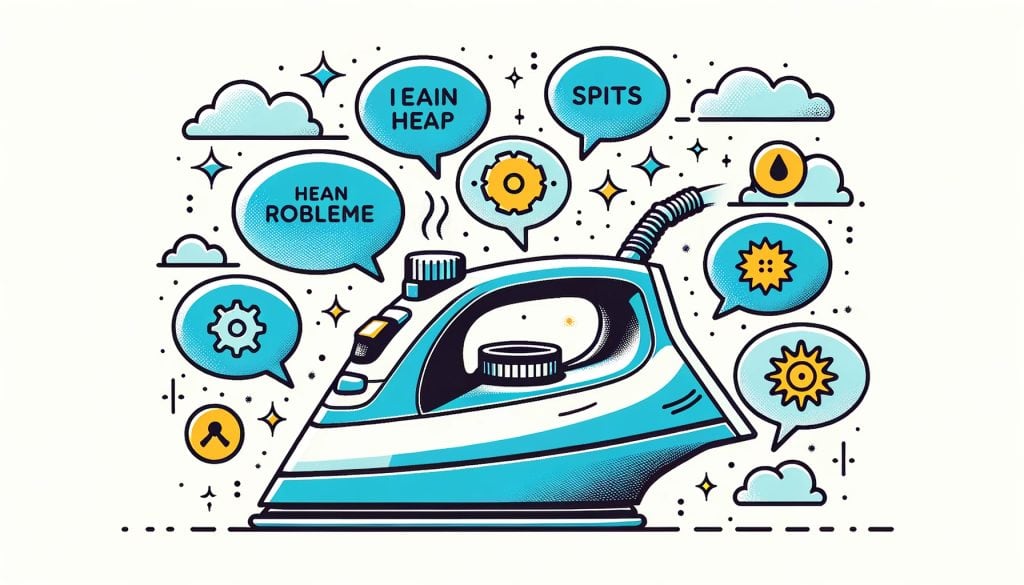
Crafting Your Own Scented Ironing Water for a Refreshing Fragrance
Who says ironing can’t be a sensory delight? With homemade scented ironing water, every press can release a refreshing aroma that lingers on your clothes.
Materials:
- Distilled water
- Essential oil of your choice (lavender, rose, and eucalyptus are popular picks)
- A spray bottle
Steps:
- Fill your spray bottle with distilled water.
- Add a few drops of your chosen essential oil. Start with about 5 drops for every cup of water, then adjust based on your fragrance preference.
- Shake well before each use. Spray lightly onto clothes before ironing for a gentle, refreshing scent.
Solutions for Common Problems like Leaks and Spits in Various Iron Models
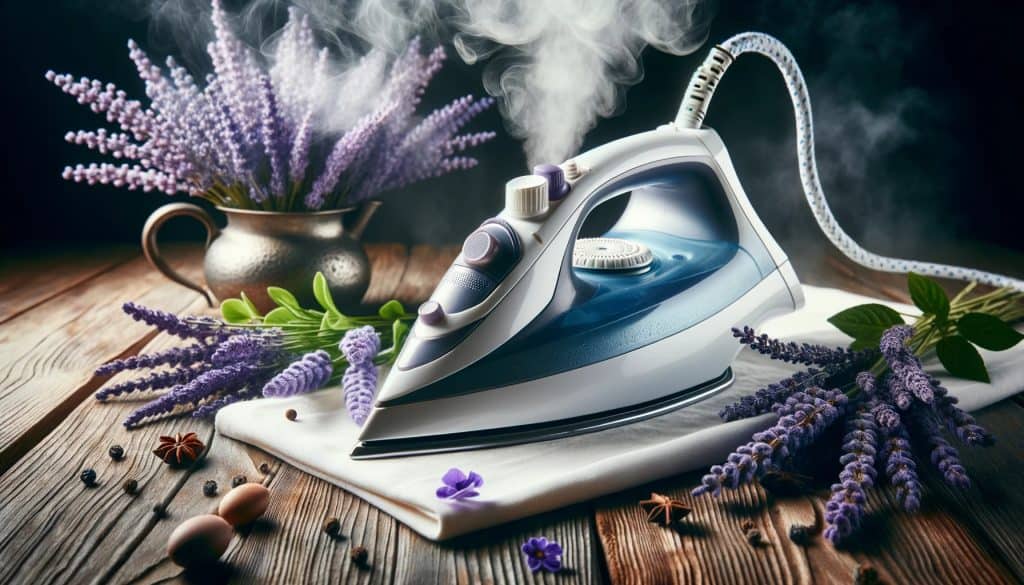
Iron giving you grief? No worries. Here’s how to tackle some common iron annoyances.
Problem: Iron leaks water. Solution: Ensure you’re not overfilling the tank. If the problem persists, consider using distilled water, as impurities in tap water can clog the iron’s steam vents.
Problem: Iron spits brown or rusty water. Solution: This is often due to mineral buildup. Empty the iron, fill with a solution of equal parts distilled water and white vinegar, and let it steam for a few minutes. Afterwards, empty and rinse with distilled water.
Problem: Iron doesn’t produce steam. Solution: The steam vents might be clogged. Try the vinegar solution mentioned above. If that doesn’t help, it might be time for a professional checkup or a new iron.
Problem: Iron sticks to clothes. Solution: Ensure your iron’s soleplate is clean and free of burned residue. Also, double-check the fabric setting. Using too high a setting for delicate fabrics can cause sticking.
Remember, every iron is unique, and what works for one might not work for another. It's always a good idea to consult your iron's manual for brand-specific advice. With a bit of know-how and some TLC, your iron can serve you faithfully for years. Happy ironing!< class="wp-block-separator has-alpha-channel-opacity"/>
Conclusion: Making the Right Water Choice for Smooth Ironing
Ironing, for many, is one of those necessary chores. But with the right tools and knowledge, it can be transformed from a dreaded task into a satisfying ritual. Central to this transformation is the water you use in your steam iron. Let’s wrap up with some key takeaways and actions you can apply straight away.

Key Takeaways:
- Water Type Matters: Not all waters are made equal when it comes to ironing. Distilled water is the gold standard, reducing mineral buildup and ensuring a smooth glide. But, depending on your iron model and the water quality in your area, tap or filtered water might do the trick.
- Maintenance is Key: Regularly cleaning your iron, especially if you use tap water, can extend its life and performance. Simple household items like white vinegar can be a game-changer in preventing mineral deposits.
- Scented Pleasures: Ironing can be aromatic! DIY scented ironing waters, made with a few drops of essential oil, can make the chore feel more like a spa session.
- Know Your Iron: Different irons have different needs. Always refer to the manufacturer’s guidelines, especially when considering water types and cleaning methods.
Actionable Insights:
- Test Your Tap: If you’re curious about using tap water, test it first. If it leaves residues or causes spitting, switch to distilled or filtered water.
- Regularly Rinse: Once a month, fill your iron with a mixture of distilled water and white vinegar, let it steam for a few minutes, then rinse. This can help keep those steam vents clear.
- Stay Fragrant: Try making your own scented ironing water. It’s simple, and the fresh fragrance can elevate your ironing experience.
- Stay Updated: New iron models with advanced features are constantly being released. Keep an eye out, and consider upgrading if your current iron is giving you too much trouble.
In the end, the goal is smooth, crisp clothes with minimum fuss. With the right water choice and a bit of care, your iron can be your trusty ally in this quest. So, the next time you're faced with a pile of wrinkled clothes, remember these tips, take a deep breath, and iron on with confidence!
